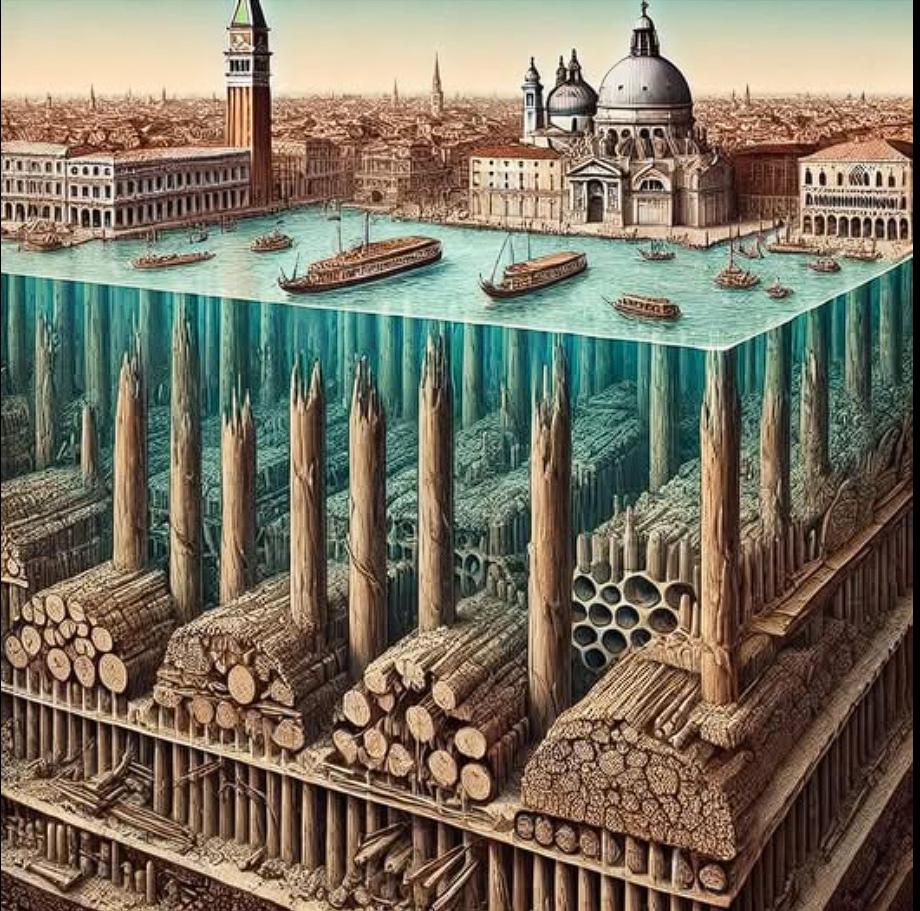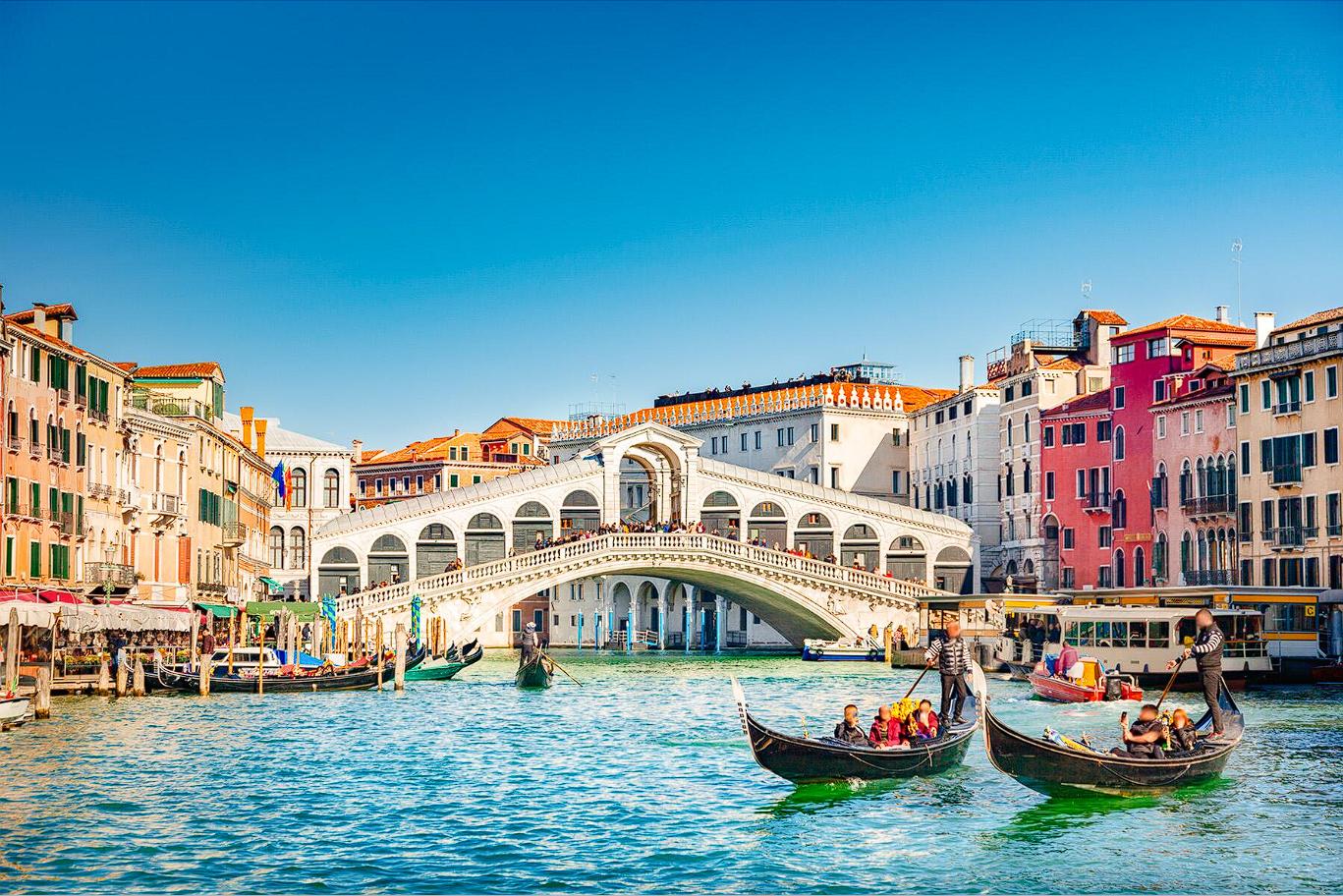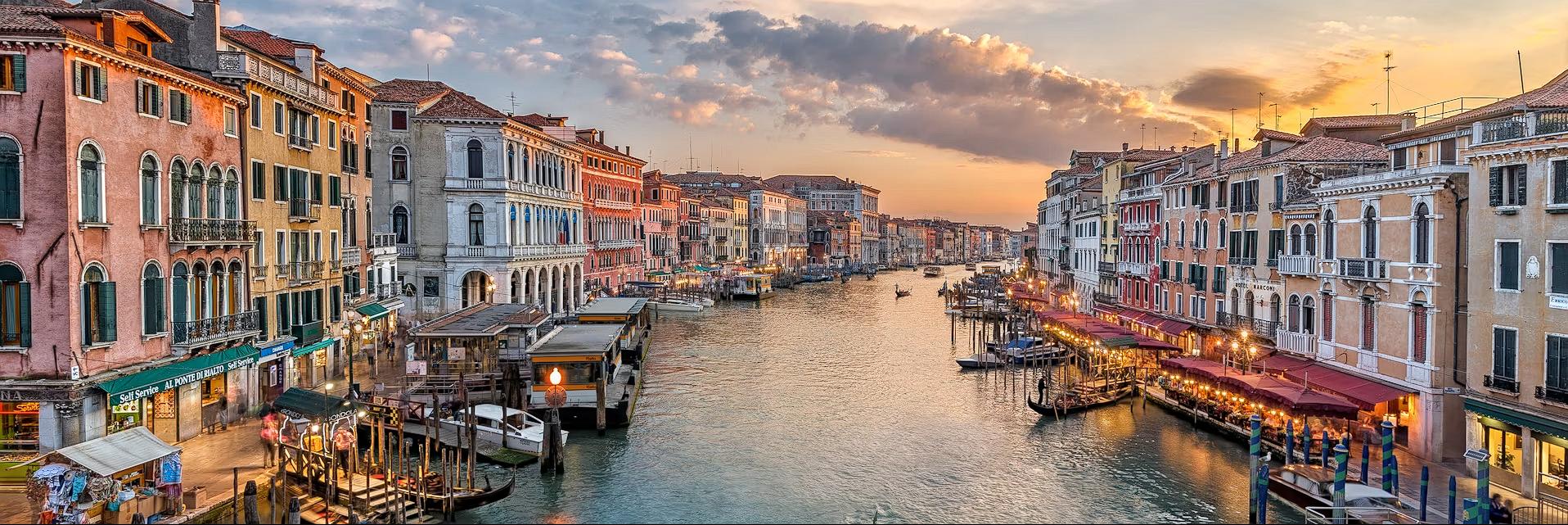Since 421 AD, Venice has defied the odds, rising from the lagoon’s waters on a foundation of millions of wooden piles. This extraordinary engineering feat, relying on alder and oak trunks driven deep into the clay seabed, has sustained one of the world’s most enchanting cities for over 1,500 years.
The Ingenious Foundation of Venice
Venice’s unique foundation, built on a vast network of wooden piles, is a testament to the ingenuity and resilience of its early inhabitants.
Rising from the Waters
The story of Venice’s foundation begins in 421 AD, when early settlers ingeniously adapted to the challenging lagoon environment.

- Lagoon Settlement:
- Early settlers recognized the strategic advantages of the lagoon, providing natural defenses and access to trade routes.
- Venice was built on a lagoon.
- Wooden Pile Solution:
- Faced with unstable ground, they devised a solution using wooden piles to create a stable foundation for their city.
- They used wooden piles.
- Overcoming Challenges:
- This innovative approach allowed them to overcome the challenges of building on water, laying the groundwork for Venice’s unique urban development.
- They overcame challenges.
Millions of Wooden Piles
The sheer scale of Venice’s foundation is staggering, involving millions of wooden piles driven deep into the lagoon’s clay bed.
- Alder and Oak Wood:
- Mostly made of alder, with some oak, the submerged trunks have proven remarkably durable, hardening into stone-like pillars over time.
- They used alder and oak wood.
- Submerged Forest:
- These trunks form a vast hidden forest beneath the city, creating a solid platform for its buildings and infrastructure.
- It’s like a submerged forest.
- Engineering Marvel:
- The sheer number of piles and the precision of their placement make Venice’s foundation an engineering marvel of medieval craftsmanship.
- It’s an engineering marvel.
Hardening Effect of Saltwater
The prolonged exposure to saltwater has transformed the wooden piles into stone-like pillars, enhancing their durability and strength.

- Natural Petrification:
- The saltwater’s mineral content has caused a natural petrification process, turning the wood into a hard, stone-like material.
- Natural petrification occurred.
- Enhanced Durability:
- This process has significantly enhanced the durability of the piles, allowing them to withstand the test of time and the weight of the city.
- Durability was enhanced.
- Long-Term Stability:
- The hardened piles provide long-term stability, ensuring the foundation’s resilience against erosion and decay.
- It provides long term stability.
Key Structures and Foundation Details
Venice’s most iconic structures rest on vast networks of wooden piles, showcasing the scale and precision of the city’s foundation.
St. Mark’s Campanile
The iconic St. Mark’s Campanile, a symbol of Venice, rests on an astounding 100,000 wooden piles.
- Massive Support System:
- The sheer number of piles supporting the campanile underscores the scale of Venice’s foundation and the importance of its stability.
- It has a massive support system.
- Historical Significance:
- The campanile’s foundation highlights the historical significance of the wooden pile system, demonstrating its enduring strength.
- It has historical significance.
- Engineering Precision:
- The precision required to place and drive 100,000 piles showcases the advanced engineering skills of the city’s builders.
- It shows engineering precision.
Basilica della Salute
The magnificent Basilica della Salute, another iconic Venetian landmark, required over a million wooden piles for its foundation.

- Scale of Construction:
- The need for over a million piles highlights the scale of the basilica’s construction and the challenges of building on the lagoon.
- The construction was large scale.
- Architectural Achievement:
- The basilica’s foundation is an architectural achievement, demonstrating the ability to build grand structures on unstable ground.
- It was an architectural achievement.
- Foundation Density:
- The high density of piles under the basilica ensures its stability and longevity, showcasing the meticulous planning involved in its construction.
- The foundation was dense.
Pile Placement and Depth
The wooden piles were driven up to three meters into the seabed, spaced just half a meter apart, creating a solid and dense foundation.
- Depth of Piles:
- The depth to which the piles were driven ensures their stability and load-bearing capacity, providing a strong anchor in the clay seabed.
- The piles were driven deep.
- Spacing and Density:
- The close spacing of the piles creates a dense and solid foundation, distributing the weight of the buildings evenly and preventing sinking.
- The spacing was dense.
- Creating a Solid Base:
- This meticulous placement and spacing of piles created a solid base, transforming the unstable lagoon environment into a viable building site.
- It created a solid base.
The Enduring Legacy of Venice’s Foundation
Venice’s wooden pile foundation continues to support one of the world’s most enchanting cities, demonstrating the enduring power of innovation and resilience.
Medieval Craftsmanship
The extraordinary feat of medieval craftsmanship involved in building Venice’s foundation highlights the skills and ingenuity of its early inhabitants.

- Skilled Labor:
- The construction required skilled labor and meticulous planning, showcasing the expertise of Venetian builders.
- It required skilled labor.
- Innovative Techniques:
- The innovative techniques used to drive and place the piles demonstrate the advanced engineering capabilities of the time.
- Innovative techniques were used.
- Enduring Strength:
- The enduring strength of the foundation is a testament to the quality of the craftsmanship and the durability of the materials used.
- It has enduring strength.
City’s Resilience
Venice’s ability to withstand the challenges of its environment and maintain its structural integrity is a testament to its resilience.
- Adapting to Challenges:
- The city’s foundation demonstrates its ability to adapt to the challenges of building on water, showcasing its resilience and ingenuity.
- They adapted to challenges.
- Maintaining Integrity:
- Despite centuries of exposure to saltwater and the weight of its buildings, the foundation continues to maintain its integrity.
- The foundation maintains integrity.
- Enduring Innovation:
- The foundation stands as a symbol of enduring innovation, inspiring admiration for the city’s ability to overcome natural obstacles.
- It shows enduring innovation.
Modern Relevance
Venice’s foundation continues to inspire and inform modern engineering practices, highlighting the enduring relevance of ancient solutions.
- Inspiration for Modern Engineering:
- The techniques used in Venice’s foundation provide valuable insights for modern engineering projects, particularly those involving challenging environments.
- It inspires modern engineering.
- Sustainable Solutions:
- The natural petrification process of the wooden piles offers a sustainable solution for building foundations in marine environments.
- It offers sustainable solutions.
- Cultural Heritage:
- The foundation is a vital part of Venice’s cultural heritage, preserving the legacy of its early builders and their innovative approach to urban development.
- It is cultural heritage.
Venice’s wooden pile foundation is a remarkable achievement of medieval engineering, showcasing the ingenuity and resilience of its early inhabitants. This extraordinary feat continues to support one of the world’s most enchanting cities, proving that innovation and resilience can stand the test of time.

CÁC TIN KHÁC
Mary Walton: The Forgotten Inventor Who Helped Clean Up America’s Cities
Tomb of Queen Nefertari in the Valley of the Queens, Egypt
Discover the Hypostyle Hall of the Temple of Hathor at Dendera
Venus de Losange: Unveiling the Mystery of a 20,000-Year-Old Paleolithic Icon